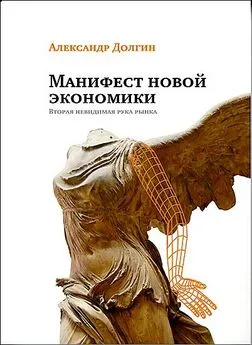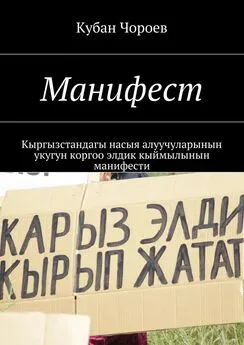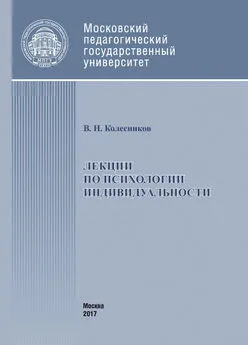Тодд Роуз - Долой среднее! [Новый манифест индивидуальности]
- Название:Долой среднее! [Новый манифест индивидуальности]
- Автор:
- Жанр:
- Издательство:Манн, Иванов и Фербер
- Год:2017
- ISBN:9785001008934
- Рейтинг:
- Избранное:Добавить в избранное
-
Отзывы:
-
Ваша оценка:
Тодд Роуз - Долой среднее! [Новый манифест индивидуальности] краткое содержание
Долой среднее! [Новый манифест индивидуальности] - читать онлайн бесплатно полную версию (весь текст целиком)
Интервал:
Закладка:
29
Michael B. Miller et al., “Extensive Individual Differences in Brain Activations Associated with Episodic Retrieval Are Reliable Over Time,” Journal of Cognitive Neuroscience 14, no. 8 (2002): 1200–1214.
30
K. J. Friston et al., “How Many Subjects Constitute a Study?” Neuroimage 10 (1999): 1–5.
31
Michael Miller, interviewed by Todd Rose, September 23, 2014.
32
Miller, interview.
33
L. Cahill et al., “Amygdala Activity at Encoding Correlated with Long-Term, Free Recall of Emotional Information,” Proceedings of the National Academy of Sciences, U.S.A. 93 (1996): 8016–8021; I. Klein et al., “Transient Activity in the Human Calcarine Cortex During Visual-Mental Imagery: An Event-Related fMRI Study,” Journal of Cognitive Neuroscience 12 (2000): 15–23; S. M. Kosslyn et al., “Individual Differences in Cerebral Blood Flow in Area 17 Predict the Time to Evaluate Visualized Letters,” Journal of Cognitive Neuroscience 8 (1996): 78–82; D. McGonigle et al., “Variability in fMRI: An Examination of Intersession Differences,” Neuroimage 11 (2000): 708–734; S. Mueller et al., “Individual Variability in Functional Connectivity Architecture of the Human Brain,” Neuron 77, no. 3 (2013): 586–595; L. Nyberg et al., “PET Studies of Encoding and Retrieval: The HERA model,” Psychonomic Bulletin and Review 3 (1996): 135–148; C. A. Seger et al., “Hemispheric Asymmetries and Individual Differences in Visual Concept Learning as Measured by Functional MRI,” Neuropsychologia 38 (2000): 1316–1324; J. D. Watson et al., “Area V5 of the Human Brain: Evidence from a Combined Study Using Positron Emission Tomography and Magnetic Resonance Imaging,” Cerebral Cortex 3 (1993): 79–94. Следует учесть, что индивидуальность прослеживается даже в гемодинамической реакции. См. G. K. Aguirre et al., “The Variability of Human, BOLD Hemodynamic Responses,” Neuroimage 8 (1998): 360–369.
34
Miller, interview, 2014.
35
Miller, interview, 2014.
36
Полное имя ученого Ламберт Адольф Жак Кетле. Сведения о биографии и взглядах см. в работах Alain Desrosiéres, The Politics of Large Numbers: A History of Statistical Reasoning (Cambridge: Harvard University Press, 1998), chap. 3; K. P. Donnelly, Adolphe Quetelet, Social Physics and the Average Men of Science, 1796–1874 (London: Pickering & Chatto, 2015); Gerd Gigerenzer et al., The Empire of Chance: How Probability Changed Science and Everyday Life (Cambridge: Cambridge University Press, 1989); Ian Hacking, The Emergence of Probability: A Philosophical Study of Early Ideas about Probability, Induction and Statistical Inference (Cambridge: Cambridge University Press, 1975); Ian Hacking, The Taming of Chance (Cambridge: Cambridge University Press, 1990); T. M. Porter, The Rise of Statistical Thinking, 1820–1900 (Princeton: Princeton University Press, 1986); Stephen M. Stigler, The History of Statistics: The Measurement of Uncertainty before 1900 (Cambridge: Harvard University Press, 1986); Stephen M. Stigler, Statistics on the Table: The History of Statistical Concepts and Methods (Cambridge: Harvard University Press, 2002).
37
Stigler, History of Statistics, 162.
38
Porter, Rise of Statistical Thinking, 47.
39
Porter, Rise of Statistical Thinking, 47–48.
40
T. M. Porter, “The Mathematics of Society: Variation and Error in Quetelet’s Statistics,” British Journal for the History of Science 18, no. 1 (1985): 51–69, citing Quetelet, “Memoire sur les lois des naissances et de la mortalite a Bruxelles,” NMB 3 (1826): 493–512.
41
Porter, Rise of Statistical Thinking, 104.
42
I. Hacking, “Biopower and the Avalanche of Printed Numbers,” Humanities in Society 5 (1982): 279–295.
43
C. Camic and Y. Xie, “The Statistical Turn in American Social Science: Columbia University, 1890 to 1915,” American Sociological Review 59, no. 5 (1994): 773–805; and I. Hacking, “Nineteenth Century Cracks in the Concept of Determinism,” Journal of the History of Ideas 44, no. 3 (1983): 455–475.
44
Porter, Rise of Statistical Thinking, 95.
45
S. Stahl, “The Evolution of the Normal Distribution,” Mathematics Magazine 79 (2006): 96–113.
46
O. B. Sheynin, “On the Mathematical Treatment of Astronomical Observations,” Archives for the History of Exact Sciences 11, no. 2/3 (1973): 97–126.
47
Adolphe Quetelet, “Sur l’appréciation des documents statistiques, et en particulier sur l’application des moyens,” Bulletin de la Commission Centrale de lé Statistique (of Belgium) 2 (1844): 258; A. Quetelet, Lettres a S. A. R. Le Duc Rйgnant de Saxe Cobourg et Gotha, sur la théorie des probabilités, appliquée aux sciences morales et politique (Brussels: Hayez, 1846), letters 19–21. Источник исходных данных: Edinburgh Medical and Surgical Journal 13 (1817): 260–264.
48
T. Simpson, “A Letter to the Right Honourable George Macclesfield, President of the Royal Society, on the Advantage of Taking the Mean, of a Number of Observations, in Practical Astronomy,” Philosophical Transactions 49 (1756): 82–93.
49
Stahl, “Evolution of the Normal Distribution,” 96–113; and Camic and Xie, “Statistical Turn,” 773–805.
50
Quetelet, Lettres, Letters 19–21.
51
Quetelet, Lettres, Letter 20.
52
Quetelet, Lettres, Letters 90–93.
53
Adolphe Quetelet, Sur l’homme et le développement de ses facultés, ou Essai de physique sociale (Paris: Bachelier, 1835); trans. A Treatise on Man and the Development of his Faculties (Edinburgh: William and Robert Chambers, 1842), chap. 1. В новой редакции книга стала называется Physique sociale ou essai sur le développement des facultés de l’homme (Brussels: C. Muquardt, 1869).
54
Stigler, History of Statistics, 171; quoting passage at page 276 of Quetelet, Sur L’homme (1835).
55
Quetelet, Treatise, 99.
56
Quetelet, Treatise, 276.
57
Hacking, “Nineteenth Century Cracks,” 455–475; Kaat Louckx and Raf Vanderstraeten, “State-istics and Statistics, 532; N. Rose, “Governing by Numbers: Figuring Out Democracy,” Accounting 16, no. 7 (1991): 673–692; and “Quetelet, Adolphe.” International Encyclopedia of the Social Sciences, 1968; Encyclopedia.com . (August 10, 2015). http://www.encyclopedia.com/doc/1G2-3045001026.html.
58
John S. Haller, “Civil War Anthropometry: The Making of a Racial Ideology,” Civil War History 16, no. 4 (1970): 309–324. The original report references Quetelet: J. H. Baxter, Statistics, Medical and Anthropological, of the Provost Marshal-General’s Bureau, Derived from Records of the Examination for Military Service in the Armies of the United States During the Late War of the Rebellion, of Over a Million Recruits, Drafted Men, Substitutes, and Enrolled Men (Washington: U.S. Government Printing Office, 1875), 17–19, 36, 43, 52. Quetelet uses this result as proof of types (Quetelet, Anthropometrie [Brussels: C. Muquardt, 1871], 16); Quetelet, “Sur les proportions de la race noire,” Bulletin de l’acadimie royale des sciences et belles-lettres de Belgique 21, no. 1 (1854): 96–100.
59
Porter, “Mathematics of society,” 51–69.
60
A. Quetelet, Du systeme et des lois qui social régissent him (Paris: Guillaumin, 1848), 88–107, 345–346.
61
Mervyn Stone, “The Owl and the Nightingale: The Quetelet/Nightingale Nexus,” Chance 24, no. 4 (2011): 30–34; Piers Beirne, Inventing Criminology (Albany: SUNY Press, 1993), 65; Wilhelm Wundt, Theorie Der Sinneswahrnehmung (Leipzig: Winter’sche, 1862), xxv; J. C. Maxwell, “Illustrations of the Dynamical Theory of Gases,” Philosophical Magazine 19 (1860): 19–32. Reprinted in The Scientific Papers of James Clerk Maxwell (Cambridge: Cambridge University Press, 1890; New York: Dover, 1952, and Courier Corporation, 2013).
62
Сведения о биографии и взглядах Гальтона см. в работах F. Galton, Memories of My Life (London: Methuen, 1908); K. Pearson, The Life, Letters and Labours of Francis Galton (London: Cambridge, University Press, 1914); D. W. Forrest, Francis Galton: The Life and Work of a Victorian Genius (New York: Taplinger, 1974); and R. E. Fancher, “The Measurement of Mind: Francis Galton and the Psychology of Individual Differences,” in Pioneers of Psychology (New York: Norton, 1979), 250–294.
63
Jeffrey Auerbach, The Great Exhibition of 1851 (New Haven: Yale University Press, 1999), 122–123.
64
Gerald Sweeney, “Fighting for the Good Cause,” American Philosophical Society 91, no. 2 (2001): i–136.
65
Sweeney, “Fighting for the Good Cause.” Сведения об изменениях в избирательном праве см. у Joseph Hendershot Park, The English Reform Bill of 1867 (New York: Columbia University, 1920).
66
Francis Galton, Hereditary Genius: An Inquiry into Its Laws and Consequences (New York: Horizon Press, 1869), 26. См. приложение, в котором содержится обсуждение некоторых математических аспектов понятия «средний человек».
67
Sweeney, “Fighting for the Good Cause,” 35–49.
68
Francis Galton, “Eugenics: Its Definition, Scope, and Aims,” American Journal of Sociology 10, no. 1 (1904): 1–25.
69
Michael Bulmer, Francis Galton (Baltimore: JHU Press, 2004), 175.
70
Francis Galton, “Statistics by Intercomparison, with Remarks on the Law of Frequency of Error,” Philosophical Magazine 49 (1875): 33–46.
71
Francis Galton, Inquiries into Human Faculty and Its Development (London: Macmillan, 1883), 35–36.
72
Francis Galton, Essays in Eugenics (London: The Eugenics Education Society, 1909), 66.
73
Piers Beirne, “Adolphe Quetelet and the Origins of Positivist Criminology,” American Journal of Sociology 92, no. 5 (1987): 1140–69; более обширное освещение темы см. в работе Porter, Rise of Statistical Thinking.
74
Quetelet, Sur l’homme, 12.
75
K. Pearson, “The Spirit of Biometrika,” Biometrika 1, no. 1 (1901): 3–6.
76
Интервал:
Закладка:
![Обложка книги Тодд Роуз - Долой среднее! [Новый манифест индивидуальности]](/books/1087260/todd-rouz-doloj-srednee-novyj-manifest-individua.webp)








